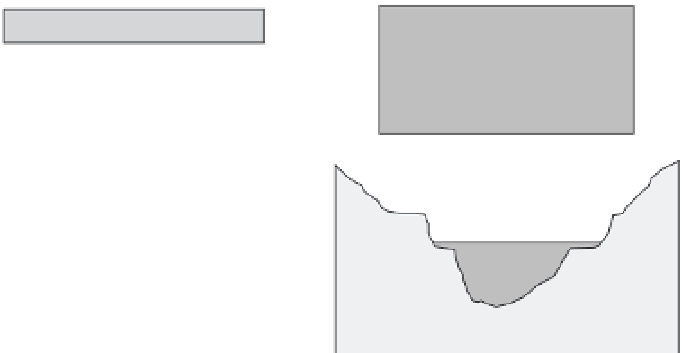Geology Reference
In-Depth Information
As shown in figure B, alluvial incision
rates, instantaneous bedrock incision rates,
and long-term rates can exhibit striking con-
trasts. Rates of alluvial or instantaneous
bedrock incision are likely to significantly
overestimate long-term rates. Knowledge of
each of these rates is useful, because they
serve to define the response of the entire
fluvial system. But care should be taken to
distinguish among them, to define the
applicable time frame of incision, and to
evaluate what factors influence the observed
incision.
Time
B
landslide
dam
Rates of
Incision
epigenetic
gorge
Alluvial change
aggradation
incision
B. Contrasting rates of river incision. Modified after
Lavé and Avouac (2001).
Bedrock-Incision Model
Sediment-Loading Model
bedrock valley prior
to Time 1
extensive lateral incision
future
bedrock
incision
bevel narrow strath after
aggradation
bevel broad bedrock strath
adjust to new base level
a
djust to new base level
l
future
bedrock
incision
future
bedrock
incision
bevel narrow strath
bevel broad bedrock strath
adjust to new base level
a
djust to new base level
l
incise bedrock
incise sediment & bedrock
Competing Strath-Formation Models
Fig. 7.13
Competing models for the formation of bedrock straths by river incision.
The “bedrock incision model” (left side) is the traditional model in which straths are formed at or near the base of
the bedrock channel. When combined with the age of the strath, the amount of subsequent channel incision serves
to define the rate of bedrock incision. The “sediment loading model” (right side) predicts that strath formation occurs
after aggradation has covered a bedrock channel that was incised previously. The magnitude and timing of bedrock
incision is difficult to deduce in this model.



























































































































